How to Defrost a Freezer
A buildup of ice in your freezer not only takes up space, but it can also prevent the freezer from working properly and can affect the taste and quality of the frozen food. Read on to find out how to defrost a freezer.
Last updated - 14/10/2022
Estimated reading time - 7 minutes
Why do I need to defrost a freezer?
Defrosting your freezer can free up more space for frozen food. It can also help your freezer run as efficiently as possible. Excessive ice acts as an insulator in a freezer, meaning the freezer will need to work harder to keep your food frozen. As a result, the lifespan of your freezer may be reduced and your energy bills may increase.
Why is there an ice buildup in my freezer?
Warm air enters the freezer whenever the freezer door is opened. Warm air contains moisture. When the warm air enters the freezer, the moisture in it condenses and turns into liquid, which then freezes and turns into ice.
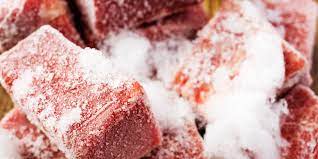
Another cause of ice or frost buildup in your freezer could be freezer burn. Freezer burn occurs when the moisture that was inside your food evaporates and becomes frozen ice crystals on the outside of the food or its packaging. These ice crystals eventually find their way to the coldest part of your freezer and increase the amount of excess ice in your freezer.
Freezer-burned food is safe to eat, although the food will most likely be tasteless, shrivelled, discoloured, and lacking in nutrients.
Avoid unexpected costs.
With a Smart Plan cover policy, you can rest easy knowing if there's an issue with your fridge freezer, we'll usually have you back up and running within 48 hours.
How to defrost a freezer
- Turn off and unplug your freezer.
- Put newspapers and towels down around the freezer to soak up water once the freezer starts defrosting.
- Remove all food, drawers, and shelves from the freezer. To prevent frozen items from thawing, put them in a cool bag or an insulated cooler box with ice packs, or if possible, ask a neighbour if they could store your frozen items in their freezer for a couple of hours.
If the drawers or shelves are frozen stuck, do not try to force them out, they’ll loosen up as the freezer defrosts. - Now that the freezer is empty, place a towel at the bottom to soak up water as it melts. As the defrosting process gets underway, you will need to wring out the towels once they are waterlogged or replace them with dry towels.
- Boil the kettle and pour the hot water into a bowl or pot. Place the bowl of hot water inside the freezer and leave it for a few hours. The steam from the hot water will help melt the ice in the freezer. Once the water cools, replace it with newly boiled water.
- As the ice melts, remove the chunks of ice and put them in a bucket or the kitchen sink. You can use a plastic spatula to help scrape off some of the ice. DO NOT use an ice pick, knife, or any other sharp object to punch through the ice, as you may puncture the walls and damage the appliance.
Be sure to keep the freezer door open throughout this process, as the outside air will help speed up defrosting. - Once the freezer is ice-free, remove all the towels, newspapers, and the bowl of hot water.
- You should take this opportunity to clean the freezer, the drawers, and the door seal. Avoid using disinfectants like bleach. Instead, use a regular multipurpose spray or washing up liquid and warm water.
- Once the freezer is ice-free and cleaned, make sure you dry the inside thoroughly. If there is still water in the freezer, it will turn to ice once the freezer is turned back on. Use a dry towel to dry the inside of the freezer.
- The freezer should now be ice-free, cleaned, and empty. It is now time to put the shelves or drawers back in and turn on the freezer.
You may need to wait a few hours for the freezer to be cold enough before you start to put food back in. - Once the freezer is cold again, you can start putting food back in it. Organise the items neatly and avoid over-packing the freezer, as an over-packed freezer will restrict the flow of air, which will cause the freezer to ice up again.
If you find any meat or fish that has started to thaw, cook it or throw it away. Refreezing meat or fish that has started to defrost could cause food poisoning.
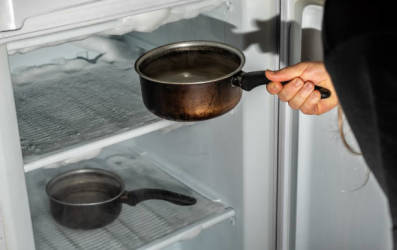
How often will I need to defrost a freezer?
How often you need to defrost a freezer will depend on how often you use it. The more you open the freezer, the more warm air enters it, which could eventually turn into ice. A typically used freezer should be defrosted once or twice a year, or when you see a ¼ of an inch of ice buildup on the walls.
How can I prevent ice buildup in my freezer?
Avoid opening the freezer door too frequently

When you open your freezer door, warm air from the outside enters the freezer. The moisture in the warm air gets cooled and turns into frost. A buildup of frost over time will turn into ice.
The longer you keep your freezer door open, the more warm air and moisture will enter. Organise your food in a way that you can easily find what you need without having to leave the door open too long.
Make sure food has cooled down before it is put in the freezer
Hot food that hasn’t fully cooled down causes humidity in freezers. This is caused by the moisture from the warm air emitted from food that hasn’t yet cooled down. When this moisture comes into contact with the cold evaporator coil inside the freezer, it freezes, and if there is enough of it, it’ll accumulate as ice.
To avoid this happening, make sure your food has cooled down to room temperature before you put it into your freezer.
Make sure the freezer door is airtight
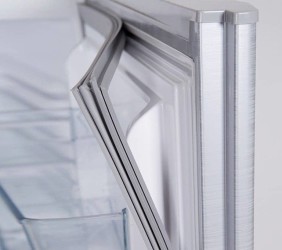
A freezer door that doesn’t shut properly creates a buildup of ice by allowing warm air to enter the freezer, and as mentioned before, the moisture in the warm air sticks to the evaporator coil and freezes and turns into ice.
To make sure your freezer door is shutting properly, check that the freezer gasket is airtight. A freezer gasket, or a freezer door seal, is a flexible elastic strip attached to the outer edge of a refrigerator or freezer door. The gasket forms an airtight seal that acts as a barrier between the cool air inside the appliance and the warmer external environment.
To check if your freezer gasket is airtight, close the freezer door on a piece of paper. Make sure there is enough of the paper sticking out so you can try and pull it. If you try to pull it and it is difficult to move, then the gasket is doing its job and is forming an airtight seal. If the piece of paper slides down or can be easily pulled out, then you should replace the gasket.
Replacing a refrigerator gasket is a straightforward job that requires you to remove the old gasket with a screwdriver and replace it with a new one. When replacing a freezer gasket, make sure you buy the correct one for your freezer’s make and model to ensure a proper fit.
Do not overfill your freezer
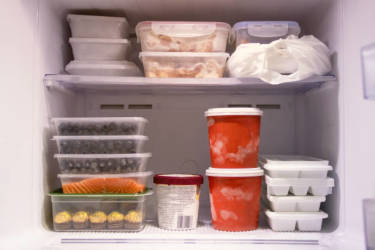
Although airflow from the outside of your freezer coming into it should be restricted, airflow inside the freezer should be maximised to ensure your freezer is running smoothly and efficiently. When airflow inside a freezer is restricted, moisture can accumulate around the evaporator and air vents. If this happens, the moisture will turn to frost and eventually become ice.
Avoid overfilling your freezer and neatly organise the contents of your freezer so that air can flow around it more easily. Where possible, put food in containers and neatly stack them on top and next to each other. You should also try to leave around 2 inches of space around the vents inside the freezer.
Set the correct temperature
Many people incorrectly set their freezer to the lowest temperature. The recommended temperature for a freezer is 0 degrees Fahrenheit or -18 degrees Celsius. If your freezer is set any lower, any moisture in the freezer will quickly turn to ice and you will have to defrost your freezer more often.
If your freezer has a temperature dial, make sure it is set to 0 degrees Fahrenheit.
There is an ice buildup in my “frost-free” freezer
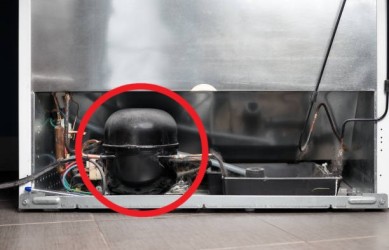
Frost-free freezers circulate cool air to prevent ice from building up. If there is an ice buildup in your frost-free freezer, there is probably an issue with the compressor pump.
The compressor pump moves the refrigerant (the refrigerant absorbs the heat inside the freezer, cooling the air) through the system. The compressor pump is usually found at the back of the freezer, and it looks like a round, black tank.
If your compressor pump is working properly, it should be warm to the touch and very gently vibrating. If it’s really hot or really cold, or not vibrating at all, it could have stopped working. You will need an appliance engineer to repair the issue.
Let us fix your fridge freezer.
At Smart Plan we have thousands of engineers up and down the country who are ready to fix your issue. We guarantee an engineer to your property within 48 hours.

